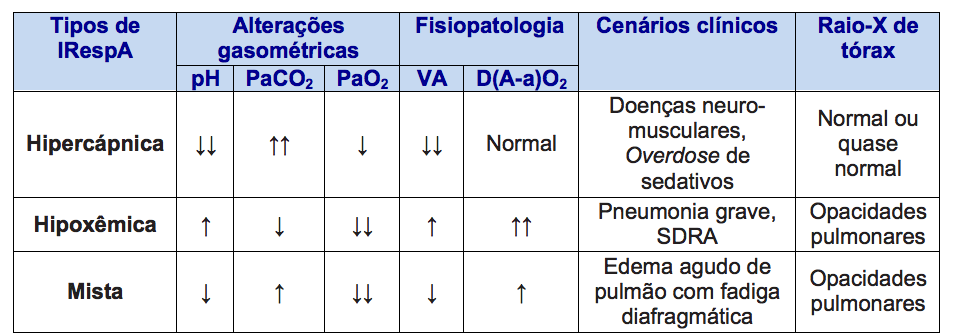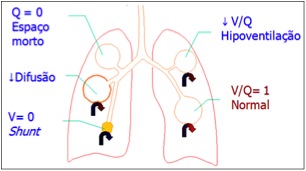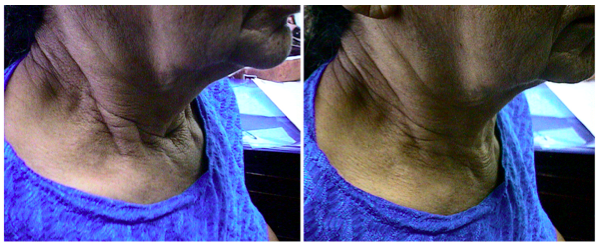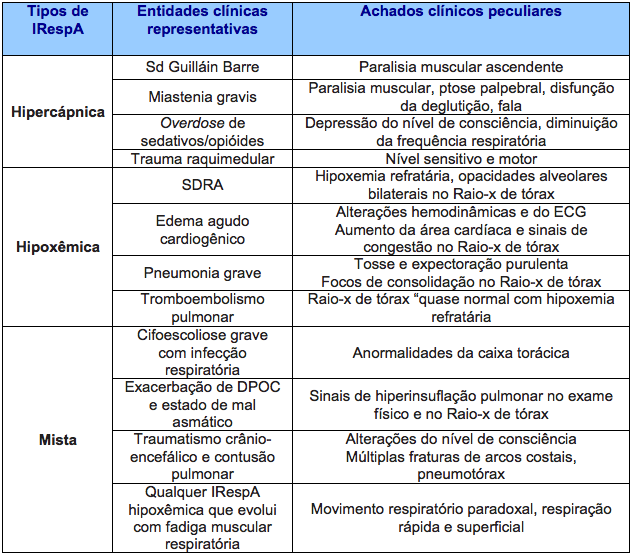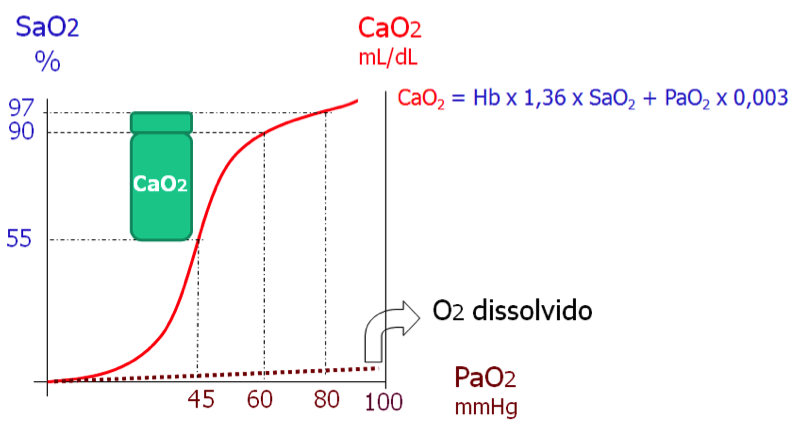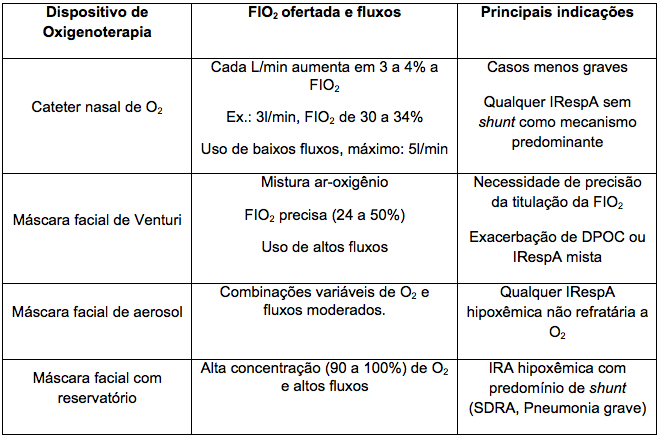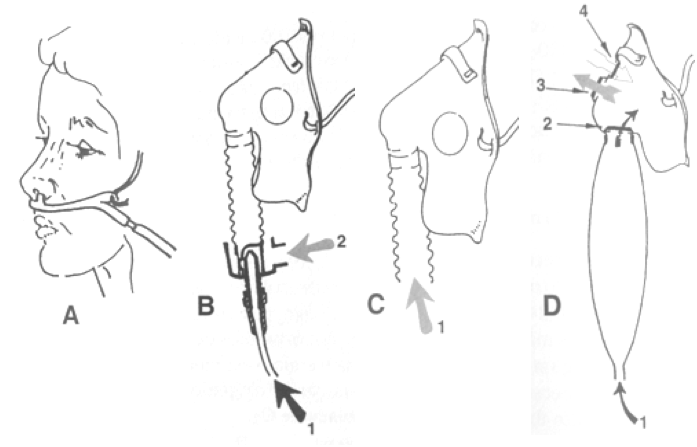Autores: Ellen Glickman, Professor, Exercise Physiology, Kent State University
Tiffany A. Collinsworth , Kent State University
Leigh Murray, Assistant Professor, Walsh University
Abstract
Aging is an inevitable process, but the rate and magnitude of the decline in physiologic function may be attenuated by an exercise/activity intervention. The prevalence of chronic disease however increases through the lifespan. Therefore there is a greater need to indirectly assess the individual’s aerobic capacity, muscular strength, body composition, flexibility and balance in an effort to formulate an individualized program of exercise for the older adult. Once these parameters are gathered the individual can engage in a program of exercise that includes: a) a warm up that emphasizes balance and flexibility, b) stimulus to augment the workload safely on the cardiovascular system as well as the bone and peripheral skeletal muscle, and c) concluding with a cool down to slowly bring the individual back to baseline. Therefore, this presentation will discuss the overall benefits of exercise for the older adult and integrate into the presentation and overview of the exercise program for the older adult that is organized at Kent State University. In addition, the data that we have collected will be integrated into the presentation as well as exercise programming that we have conducted on individuals that have special consideration.
Introduction
Aging is an inevitable process; however the rate and magnitude of the decline in physiologic function may be attenuated by maintaining an active lifestyle. Research now suggests that lifestyle and environmental factors influence much of the physiologic deterioration previously considered “normal aging.” Lifestyle and environmental factors are subject to significant modification with proper diet and exercise (Lamberts, et al. 1997 and Stampfer, et al. 2000). For most people, regular exercise reduces the risk of heart disease by approximately one half when compared with those who are physical inactive (Nieman 2006). Therefore, it is critical to explore the quality and quantity of exercise in the attenuation of chronic diseases and the enhancement of overall physiologic well being.
In the area of exercise physiology current research focuses on assessment related to functional capacity, which relates to overall good health and disease prevention (McArdle 2001). The four major components of health related fitness include cardiovascular fitness, muscular strength and endurance, and flexibility. This paper will focus on the overall benefits of exercise for the older adults in relation to the four major components of health related fitness along with balance. The specific areas addressed include the components of fitness, exercise testing and prescription, and common precautions for the older adult.
Components of Fitness
Aerobic capacity. For most individuals, regular aerobic exercise cannot stop the decline in aerobic capacity associated with aging (Kuller 1986 and Trappe 1996). Changes in volume and intensity of exercise over time likely account for the discrepancies in the decline in maximal aerobic capacity (VO2 max) between individuals. Despite this disparity, research consistently shows that physically active older men and women maintain a higher aerobic capacity that their sedentary (inactive) counterparts (McArdle 2001).
Aerobic capacity is comprised of a central and peripheral component. The central component refers to cardiovascular function while the peripheral component refers to skeletal muscle. Decrements in both of these components are linked to a decline in oxygen delivery and the age-related decline in aerobic capacity.
Central component. The central component is comprised of the heart rate (HR) and stroke volume (SV) which combined equal cardiac output (Q). Cardiac output, or the volume of blood ejected from the left ventricle per beat, also declines with age. A decline in maximum exercise HR represents a well-documented change in cardiovascular function. The literature in this area demonstrates that maximum heart rate typically declines with age in the following manner:
HR max = 220- age (yr)
This age related effect reflects medullary outflow of sympathetic activity which occurs in both males and females (Seals 1994). Since Q = HR x SV cardiac output typically decreases with age in trained and untrained men and women as a result of the age-related decrease in maximum heart rate. In addition, the reduction in the heart’s left ventricular stroke volume contributes to approximately one half of the age-related reduction in blood flow and thereby oxygen consumption. With less blood ejected from the heart per beat, less blood is distributed to the working skeletal muscle therefore producing an overall reduction on maximal aerobic capacity. In addition, the SV also declines as the overall contractile function of the heart declines with age.
Peripheral component. The reduction in overall blood flow and plasma volume accompanies a reduction in an age-related reduction in muscle mass. The lower blood flow to active muscles results from a decrease in capillary to muscle fiber ratio and to an overall reduction in muscle cross sectional area. These changes combine to elicit a reduction in the arteriovenous oxygen difference or the amount of oxygen extracted from the working skeletal muscle (a-vO2 difference). Since there is a circulatory reduction in the amount of blood moving through the system (plasma volume), and the amount of blood ejected from the left ventricle per beat (Q), a-vO2 difference also declines with age. The equation that combines the central and peripheral components is shown below:
VO2 = Q (HR x SV) x a-vO2 difference
Anaerobic capacity (muscular strength and muscular endurance). It is fairly well understood that men and women usually attain their highest strength levels between the ages of 20-40 years whereby muscle cross-sectional area is the greatest. Thereafter muscle strength declines with age. Furthermore, strength loss among the older adult contributes to limited mobility, fitness status, and the potential for increased accidents from muscular weakness, fatigue and alterations in balance (Johnson 1998).
The primary cause of reduced muscle strength even among healthy active men and women is a 40-50% reduction in muscle mass from muscle fiber atrophy and actual loss of motor units (McArdle 2001). In addition, sarcopenia (the progressive loss in muscle cross sectional area and mass) and strength loss with aging reflect the combined effects of progressive neuromuscular deterioration and a chronic decrease in regular muscle load (i.e., exercise) (McArdle 2001). Resistance training can increase muscular strength and endurance in the older adult. Research has suggested that older men demonstrate greater strength gains in muscle size and strength than females however, the percent improvement is similar. Increased muscular strength and endurance has the potential to deter the effects of frailty by increasing mobility and preventing falls and fractures. Therefore, moderate resistance training, or strength training provides a safe means to augment protein synthesis and retention while slowing the inevitable age related loss of muscle mass and strength.
Body composition. Research suggests that after the age of 18 men and women generally gain body fat until their fifth or sixth decade. It is well established that excess body fat is associated with hypertension, type 2 diabetes, stroke, CAD, and hyperlipidemia. (United Stated Department of Health and Human Services,1996.) After the age of 60, total body mass (body weight) decreases despite the fact that there is an increase in percent fat which may be the result in a reduction in muscle mass (or lean body mass) and bone mass. The limited longitudinal data in this area appears to demonstrate that a combination of habitual anaerobic and aerobic exercise produce beneficial changes in body composition ( i.e., less of a reduction in muscle mass and less of an increase in percent body fat).
Flexibility. Flexibility is the ability to move a joint through its complete range of motion (ROM). Adequate flexibility is necessary to carry out activities of daily living (ADL’s). Flexibility depends on a number of specific variables, including distensibility of the joint capsule, adequate warm up and muscle viscosity. Additionally, “tightness” of the various other tissues such as ligaments and tendons affects the ROM (ACSM 2006). Joint flexibility is decreased as connective tissue becomes stiffer and more rigid with aging. Appropriated exercises that regular move joints through there full range of motion has been found to increase flexibility 20-50% in men and women of all ages. Just as muscular strength is specific to the muscles involved, flexibility is joint specific; therefore no single flexibility test can be used to evaluate total body flexibility (ACSM 2006).
Balance
Aging often attributes to a decline in balance. Balance maintenance relies upon multiple systems, including visual, somatosensory and vestibular. A dynamic equilibrium between sensory and motor systems must be achieved (Rose 2003). Impaired balance, experienced by many older adults, tends to reduce their sense of comfort and security. This transforms to a fear of falling and thereby limits their socialization and performance of daily activities (Brill 2004). Many of the age-related changes can be reversed or compensated for when identified (Rose 2003). Various screening tests are available to assess individual’s functional limitations. The results can serve to design individualized balance and mobility programs. Research has shown that programs including flexibility, resistance exercise, walking, strength training, and dancing have exhibited improvements in balance (Mazzeo, et al. 1998). Tai Chi programs have also been successful for balance and coordination training thereby reducing the risk of falls (Choi, et al. 2005, Cotton, et al. 1998, Li, et al. 2004, and Mazzeo, et al. 1998).
Exercise Testing
To aid in the development of a safe and effective exercise prescription and optimize safety during exercise testing, it is important to screen potential participants for risk factors and or symptoms of various cardiovascular, pulmonary, and metabolic diseases as well as conditions that may be aggravated by exercise (ACSM 2006). The preparticipation evaluation can determine the extent of medical evaluation necessary prior to exercise testing. ACSM recommends preparticipation health screening to assist in identifying individuals with the following conditions:
1. Identification and exclusion of individuals with medical contraindications to exercise
2. Identification of individuals at increased risk for disease because of age, symptoms, and or risk factors who should undergo a medical evaluation and exercise testing before starting an exercise program
3. Identification of persons with clinically significant disease who should participate in a medically supervised exercise program
4. Identification of individuals with other special needs
A comprehensive pre-exercise test evaluation in a clinical setting generally includes a medical history, physical examination, and laboratory tests.
Exercise programs for the older adult should focus on increasing or maintaining the health related and physiologic components of fitness. According to ACSM, 2006 the purpose of health related fitness testing is as follows:
1. Educating participants about their present health related fitness status relative to health related standards and age and sex matched norms
2. Providing data that are helpful in development of exercise prescriptions to address all fitness components
3. Collecting baseline and follow- up data that allow evaluation of progress by exercise program participants
4. Motivating participants by establishing reasonable and attainable fitness goals
5. Stratifying cardiovascular risk
A well rounded fitness test includes the assessment of the four major components of health related fitness; body composition, cardiorespiratory fitness, muscular strength and endurance, and flexibility. It is important to include balance when assessing older adults.
Older adults should strive to maintain their independence and functional abilities as long as possible. One of the limitations to this end is the ability to maintain balance when performing ADL’s. The inability to accomplish these tasks can lead to an increased susceptibility to falls. More than one third of adults 65 years or older fall each year (CDC 2006). Falls are the leading cause of injury deaths among older adults and the most common cause of non fatal injuries and hospital admissions for trauma. Hip fractures account for the greatest number of falls cause the greatest number of deaths, and lead to the most severe health problems and reduction in quality of life (CDC 2006).
Risk factors for falls include lower body weakness, problems with balance and coordination, and taking four or more medications or any psychoactive drugs. Other risk factors include Parkinson’s disease, history of stroke, previous falls, arthritis, multiple risk factors and cognitive or visual impairments (CDC 2006). Balance and coordination are often the most overlooked areas for exercise testing and prescription of the older adult. Incorporating balance into the exercise testing and prescription is essential in the prevention of falls.
Exercise Energy Expenditure Goals: Epidemiology versus Exercise Physiology and the Health Related Benefits of Exercise.
The interaction of frequency, intensity, duration and mode of exercise determines the caloric expenditure from a given activity. It has been generally accepted that many of the health related benefits and training adaptations associated with increased physical activity are related to the total amount of work accomplished (i.e., energy expenditure). However, the energy expenditure required to elicit significant improvements in VO2max, weight loss, or a reduced risk of premature chronic disease vary. Therefore, exercise prescriptions should be designed with energy expenditure (as well as intensity and duration principles) as a much needed requirement.
The American College of Sports Medicine suggests that every day an individual expend approximately 150-400 kcal by engaging in physical activity (GETP 2006). The lower end of the range is equivalent to approximately 1000 kcal per week from physical activity, which has been demonstrated by Paffenbarger et al. to be associated with a significant reduction (20-30%) in all causes of mortality. An energy expenditure of 100 kcal per week however, is not sufficient for weight loss or weight control. Recent research has indicated that 60 min or more per day may be necessary for weight loss and maintenance, which is double the current recommendation for health-related physical activity (ACSM Position Stand 2001).
Further, the relationship between physical inactivity and coronary heart disease suggests that the lack of regular exercise contributes to heart disease almost in a cause and effect manner; that is, the sedentary person has almost twice the risk of developing heart disease as the most active individual (Powell 1987). Therefore, the strength of the association between the lack of exercise and heart disease risk equals that observed for hypertension, cigarette smoking, and high serum cholesterol. This makes physical inactivity the greater heart disease risk, since more people lead sedentary lifestyles than possess one or more other primary risks factors (McArdle 2001). The life-protecting benefits of exercise are linked more with preventing early mortality and potentially altering the individual’s quality of life, than with extending life span. It is interesting to note that only light to moderate regular activity such as walking, gardening, stair climbing produce health benefits for previously sedentary middle-aged and older men and women. These sedentary individuals represent the largest segment of the population that is at the greatest risk (Bouser 1999).
One of the most pivotal research papers on atherosclerosis in young American soldiers killed in Korea showed upon autopsy, advanced lesions in men whose average age was 22 years (Enos 1953). These research findings shocked the medical community and started to focus the attention on the notion that the atherosclerotic process may begin as early as childhood. We now know that fatty streaks and clinically significant plaques develop rapidly during adolescence and through the third decade of life (Hubinger 1997).
Coronary heart disease is the leading health problem and the primary cause of death. It is also the most expensive condition to treat and resource-intensive chronic condition (McArdle 2001). Research over the past 40 years has identified various personal characteristics, behaviors, and environmental factors linked to the incidence of coronary heart disease (CHD). Although research suggests that many of the risk factors are related to CHD risk, a cause and effect relationship does not exist between these factors. The modifiable risk factors include:
Diet
Elevated blood lipids
Hypertension
Personality and behavior pattern
Cigarette smoking
High serum uric levels
Sedentary lifestyle
Pulmonary function abnormalities
Excessive body fat
Diabetes mellitus
ECG abnormalities
Tension and stress
Poor education
Elevated homocysteine levels
The non modifiable risk factors of the risk factors that cannot be changed include:
Age
Gender
Ethnic background
Male pattern baldness (crown of the head, may be due to elevated androgen levels)
Family history
High levels of physical activity have been associated with lower CHD incidence rates of the Masai tribesmen of East Africa (McDonough 1965). Therefore, the linkage between the increase in energy expenditure and the reduction in dietary fat may prove to be beneficial in the reduction of other modifiable risk factors listed above (i.e., obesity, high blood pressure, etc).
Non modifiable risk factors: Age, gender and heredity.
Age represents a risk factor due to its association with other risk factors such as hypertension elevated blood lipids and glucose intolerance. At most ages, women demonstrate a lower risk of death from heart disease than men. It is uncertain if the change in hormone levels of estrogen woman may provide protection against CHD. In regards to genetics, it is fairly well demonstrated that heart attacks that occur early in one’s life may suggest a genetic predisposition to heart disease. Abnormalities may exist in regards to blood lipids, obesity, or a behavioral risk such as smoking, inactivity or obesity which have all been linked to CHD. These modifiable factors represent the “big five” heart disease risks proposed by the American Heart Association Each exists as a potent, independent CHD risk that can change considerably with lifestyle modification (McArdle 2001).
Modifiable risk factor: Exercise (physical inactivity). Research studies have clearly shown that regular physical exercise protects against heart disease. Sedentary men and women are approximately twice as likely to suffer a fatal heart attack as their more active counterparts. Maintenance of aerobic fitness throughout the lifespan provides protection against CHD risk factors and disease occurrence.
Trained aerobic athletes usually maintain a higher HDL-C (high density lipoprotein cholesterol). Further, sedentary men and women that engage in an exercise program also exhibit favorable alterations in HDL-C. Research suggests that exercise intensity and duration exert independent effects in altering CHD risk factors. However, exercise duration exerts the greatest effect on HDL-C, while exercise intensity may modify blood pressure. In most exercise scenarios a favorable change in lipid profile does not require the exercise intensity needed to improve cardiovascular fitness. Further, research suggests that favorable exercise-related lipoprotein changes probably result from enhanced triglyceride clearance from plasma in response to exercise (Schwartz 1992).
Dietary fiber, Insulin and CHD risk. Insulin resistance and associated hyperinsulinemia relate to CHD risk factors of age, obesity, central body fat distribution, smoking, physical inactivity, hypertension, dyslipidemia, and abnormalities in blood clotting factors. Therefore many clinicians and researchers consider insulin resistance and subsequent hyperinsulinemia independent CHD risk factors (Rulge 1998).
Dietary fiber may serve a dual role in the prevention of CHD. First, it may attenuate the insulin response to a meal containing carbohydrate. Further, it may reduce the tendency to accumulate body fat due to the attenuation of insulin’s role in facilitating fat synthesis. Excessive body fat increases insulin resistance, which may lead to hyperinsulinemia. High circulating insulin levels may also cause hypertension, dyslipidemia, abnormalities in blood clotting factors and even vascular injury.
Exercise Prescription
Exercise prescriptions are designed to enhance physical fitness, promote health by reducing the risk of developing chronic diseases (i.e., diabetes, hypertension), and ensure safety during the exercise session. The exercise prescription should consider the individuals health needs, clinical status and exercise interests to enhance compliance. The optimal exercise prescription for an individual is determined by an evaluation of the individual’s response to exercise including their exercise heart rate, rating of perceived exertion, blood pressure, and the electrocardiogram when applicable. A health history questionnaire provides the exercise physiologist additional necessary information utilized in determining the guidelines of the exercise program (i.e., level of monitoring or supervision that an individual may need) or a medical evaluation prior to engaging in any exercise program.
Quality and Quantity of Exercise: The basis of the exercise prescription:
The main goal of the exercise prescription is to produce a change in the personal health behavior of an individual to include habitual physical activity. The essential components of a systematic, individualized exercise prescription include: mode, intensity, duration, frequency and progression.
To maintain aerobic fitness the American College of Sports Medicine suggest aerobic exercise 3-5 days per week, for 20-60 minutes in duration at an intensity that is 50-85% of the maximum heart rate. Although lower intensity, longer duration exercise is recommended for the older adult as it may reduce the risk of injury and provide the needed benefits to the cardiovascular and skeletal muscle (central and peripheral systems). Furthermore, any exercise that is in excess of the aforementioned recommendation (i.e., the equivalent for running 10-20 miles per week) may set the stage for injury.
Components of the Training Session
The exercise program should include a warm-up period (approximately 5-10 min), a stimulus or conditioning phase (20-60 min) and a cool down phase (5-10 min). Cardiorespiratory, flexibility, resistance training, and a balance program should be integral parts of a comprehensive exercise training program. Flexibility can be incorporated into the warm up and/or cool down phase. Resistance training is often completed on alternate days; however both activities can be combined into the same workout (GETP 2006). An adequate balance program can be performed during the conditioning and/or cool-down phases. In addition, it can be incorporated into the flexibility program as well.
Warm up.
The warm up facilitates the transition from rest to exercise, stretches the postural muscles, increases blood flow, and increases body temperature thereby dissociating more oxygen and increasing metabolic rate. The warm-up may reduce the chance of a musculoskeletal injury by increasing connective tissue extensibility, improving joint ROM and function, and enhancing muscular performance (GETP 2006).
The warm up phase of the exercise session should be 5-10 min of low-intensity large muscle group activity which progresses to an intensity at the lower limit of what is prescribed for the individual (base on their HR range, i.e., exercise intensity). In general low-intensity stretching with light resistance bands is recommended before commencing a more vigorous stimulus or conditioning phase of exercise.
Stimulus or Conditioning Phase
The stimulus or conditioning phase includes cardiorespiratory endurance (aerobic phase). Cardiorespiratory endurance refers to the ability to persist or continue in strenuous activity requiring large-muscle groups for a prolonged period of time (GETP 2006). Those who have difficulty sustaining exercise for 30 minutes or who prefer shorter bouts of exercise can be advised to exercise for 10-minute periods intermittently throughout the day. It is recommended to avoid injury and ensure safety, older individuals should initially increase exercise duration rather than intensity.
The goal for the participant engaged in exercise is to seek improvements in the ability to deliver oxygen (O2) to the working muscles via the cardiovascular system (central) and in the muscle’s ability to generate energy with oxygen (peripheral) in an effort to increase their maximal oxygen consumption (VO2 max). The changes in cardiorespiratory fitness are measured by the assessment of one’s VO2 max, which is related to a minimal threshold of frequency, duration, intensity and volume of exercise (Pollock 1998). Genetics also influence the magnitude and rate of change in maximal aerobic capacity. Individuals with a lower initial level of fitness generally demonstrate the greatest increases in VO2 max. In contrast, more modest increases occur in healthy individuals with high initial levels of fitness (GETP 2006).
Muscular Strength
The reduction in muscle strength in older adults contributes to a decline in functional capacity. Resistance training increases muscular strength and endurance in elderly individuals (ACSM 2006) and in turn has the potential to deter the untoward effects of frailty by improving mobility and preventing falls and fractures. Improved muscular fitness may allow the individual to perform activities of daily living with less effort and extend their functional independence. Resistance training should be an important focus of any exercise program, particularly for elderly people. The first several resistance training sessions should be closely supervised and monitored by trained personnel who are sensitive to the special needs and capabilities or elderly people. The first 8 weeks of a resistance training program should begin with minimal resistance to allow for adaptations of the connective tissue elements.
According to the ACSM the following guidelines should be implemented when strength training with older adults:
• Perform one set of 8 to 10 exercises that use all of the major muscle groups
• A set should involve 10 to 15 repetitions that elicit a perceived exertion rating of 12 to 13 (somewhat hard) Borge scale
• As a training effect occurs, achieve an overload initially by increasing the number of repetitions, then by increasing the resistance
• When return from a lay off of more than 3 weeks, start with resistances of 50% or less of previous training intensities, and then gradually increase the resistance.
Older adults should be discouraged from participation in strength training exercises during active periods of pain or inflammation for arthritic patients. Participants should be encouraged to perform exercises in a range of motion that is within a “pain free arc” while completing multi joint exercises as opposed to single joint exercises. Weight training machines are often recommended over free weights as they generally require less skill. They also protect the back by stabilizing the user’s body position, and allow the user to more easily control the exercise range of motion. Older adults should be encouraged to participate in a year round resistance training program.
Flexibility
An adequate range of motion in all body joints is important to maintaining an acceptable level of musculoskeletal function, balance, and agility. Maintaining adequate levels of flexibility enhances an individual’s functional capabilities and reduces injury potential particularly for older adults. Flexibility programs should focus on major joints in the body including the; hip, back, shoulder, knee, upper trunk and neck region. ACSM recommend static stretching, which involves slowly stretching a muscle to the end of the range of motion and then holding that position for an extended period of time (15-30 seconds). The optimal number of stretches per muscle group is 2 to 4. Flexibility exercise should be performed in a slow, controlled manner with a gradual progression to greater range or motion.
Cool down
The cool down period provides a gradual recovery from the endurance or stimulus phase of exercise. The cool down is critical to attenuate the exercise-induced circulatory responses, return HR and BP to their near resting values, and maintain venous return which thereby reduces the potential for exercise induced hypotension (drop in BP). The cool down phase facilitates the dissipation of body heat and may promote the removal of the by product of metabolism, lactate.
The cool down has a unique goal especially for the cardiac or high risk patient as this is the phase of exercise in which cardiovascular complications may occur. It is assumed that the sudden termination of exercise and thereby blood flow and the muscle pumps may result in an abrupt decrease in venous return, and possibly reducing coronary blood flow when HR and myocardial oxygen demands are still very high (GETP 2006). Therefore the cool down phase is a critical ingredient in a comprehensive safe exercise program for all individuals.
Precautions
When working with the older adult, there are several health-related conditions that need to be evaluated prior to beginning an exercise program. When conducting the general health screening prior to the start of an exercise program, it is important to note pathological conditions such as osteoarthritis, osteoporosis, previous total hip or knee replacements, previous hip fractures, history of tendonitis or other inflammatory conditions, degenerative disc disease, and spinal stenosis. These conditions are common among older adults and therefore the exercise professional should take special care when administering exercise tests and techniques to these individuals.
Osteoarthritis (OA) is a common pathology that entails degenerative changes occurring in various joints of the body. This occurs as a result of an alteration in the structure of the articular cartilage within the joint due to injury or the aging process. OA can decrease the body’s ability to absorb shock and distribute forces applied to the joints with everyday activities. This force application can be accentuated with certain exercise activities, specifically weight-bearing activities. Therefore, educating the client is important in preventing exacerbation of their symptoms and ultimately their participation in an exercise program.
Bone loss is an inevitable event that occurs with aging. Many individuals exhibit excessive bone loss resulting in osteopenia and osteoporosis. These individuals are susceptible to fractures due to alterations in the structure of their bone. The most common areas are the vertebra bodies of the lumbar and lower thoracic region, the femoral neck of the hip, and the distal radius of the wrist. Research suggests that many falls that occur with the older adult are the result of a fracture of that bone just prior to the fall occurring. Excessive weight-bearing activities i.e., excessive resistance with weight training, may not be indicated. These individuals need to find a delicate balance between exercise that will promote bone health and exercise that is not beneficial. It is important for exercise professionals to identify the individuals at risk and modify their exercise regimen accordingly.
Many older adults, due to arthritic changes and/or falls, may have had surgical procedures such as total knee and hip replacements and hip fracture repair with internal fixation devices (plates and screws). When these surgical interventions are performed, screws, plates, and prosthesis are inserted into the bone of the individual. The bone structure will be altered and depending on the procedure, bone formation and resorption can be altered. This could result in atrophy and/or hypertrophy of the bone in different locations in the affected area. They may demonstrate decreased ROM and balance when compared to their normal, health counterparts. Many times, the surgical components may not allow for the resumption of “normal ROM”. Although the functional independence of these individuals is generally restored, the exercise professional should take special care when establishing an exercise program for these individuals.
Inflammation is a common process that occurs with any activity. However, if the inflammatory process becomes elevated, it may result in conditions such as tendonitis or bursitis. Aging affects the connective tissue components of muscles, tendons, joint capsules, and many other components of joint structure. Inflammation can cause pain, decreased ROM, alterations in posture, and decreased ability to conduct activities of daily living. When prescribing exercise programs for the older adult, any history of inflammatory conditions must be noted and taken into consideration when performing ROM, flexibility and strengthening exercises. Exercise professionals must carefully monitor the client’s response to the number of repetitions and sets with regard to muscle strengthening.
Finally, degenerative disc disease (DDD) and spinal stenosis (SS) are two common diagnoses seen in the elderly population. Degenerative disc disease entails the destruction of the disc that lies between each vertebra, ultimately narrowing the space between each vertebra and possibly causing nerve compression. Spinal stenosis is a narrowing of the canal which contains the spinal cord or the foramen in which the spinal nerves exit the spinal cord. Spinal stenosis may occur due to arthritic changes on the vertebrae itself. Symptoms for DDD and SS may include pain and numbness in the lower extremities, muscular weakness, and sensory deficits. The exercise professional may need to alter exercise positions for these individuals so as to decrease the risk of symptom exacerbation.
Conclusion
Participation in a regular exercise program is an effective intervention associated with aging (ACSM 1998). With the appropriate exercise screening, testing and prescription the older adult is able to benefit from participation in an individualized exercise program. Exercise testing and prescription for the older adult should focus on cardiorespiratory endurance, muscular strength and endurance, flexibility and balance. Benefits associated with exercise include achieving optimal body composition, increased muscular strength and endurance, flexibility, and balance. Regular physical activity has also been shown to increase functional capacity which contributes to leading a healthy, independent lifestyle with greater quality of life.
References
American College of Sports Medicine. 2006. Guidelines for Exercise Testing and Prescription 7th edition.
American College of Sports Medicine 1998. Position Stand: The recommended quantity and quality of exercise for developing and maintaining cardiorespiratory and muscular fitness, and flexibility in healthy adults. Medicine and Science in Sports and Exercise 30:975-991.
American College of Sports Medicine. 1998. Exercise and Physical Activity for Older Adults. Medicine and Science in Sports and Exercise 30:6.
Brill, P. A. 2004. In Patterson-Wright J., Mustain E., Schwartzentraub M. and Feeney J. (Eds.), Functional fitness for older adults. Champaign, IL: Human Kinetics.
Bouser, MG 1999. Stroke in women. Circulation 99: 463–467.
Center for Disease Control 2006. Falls and hip fractures among older adults. http://www.cdc.gov/ncipc/factsheets/falls.htm (accessed September 7, 2006)
Choi, J. H., Moon, J. S., & Song, R. 2005. Effects of sun-style tai chi exercise on physical fitness and fall prevention in fall-prone older adults. Journal of Advanced Nursing 5(2), 150-157.
Cotton, R. T., Ekeroth, C. J., & Yancy, H, eds 1998. Exercise for older adults: ACE's guide for fitness professionals. Champaign, IL: Human Kinetics.
Enos WF, Holmes RH, Beyer, J 1953. Coronary Disease Among United States Soldiers Killed in Action in Korea. JAMA 152: 1090-1093.
Hubinger LM, Mackinnon LT 1996. The effects of treadmill running on liproprotein(a) (lf(a)) levels in middle aged males. Medicine and Science in Sports and Exercise 29:436.
Li, F., Harmer, P., Fisher, K. J., & McAuley, E. 2004. Tai chi: Improving functional balance and predicting subsequent falls in older persons. Medicine and Science in Sports and Exercise 6(12), 2046-2052.
Johnson CL, Rifkind BM, Sempos CT, Carroll MD, Bachorik PS, Briefel RR, Gordon DJ, Burt VL, Brown CD, Lippel CD et al. 1993. Declining serum total cholesterol levels among US adults: The National Health and Nutrition Examination Surveys. JAMA. 269: 3002–3008.
Kuller LH et al. 1986. Sudden death and the decline in coronary heart disease mortality. Journal of Chronic Disease 39:1001.
Lamberts SWJ, van den Beld AW and van der Lely AJ 1997. The endocrinology of aging. Science 278 419–424.
Mazzeo, R. S., Cavanagh, P., Evans, W. J., Fiatarone, M., Hagberg, J., & McAuley, E., et al. 1998.
Position Stand: Exercise and physical activity for older adults. Medicine and Science in Sports and Exercise 30(6), 992-1008.
McArdle DI, Katch FI, and Katch VL. Exercise Physiology 5th edition: Energy, Nutrition and Human Performance. Lipponcott Williams and Wilkins Baltimore Maryland 2001.
McDonough JR et al. 1965. Coronary Heart Disease among negros and whites in Evans County Geordia. Journal of Chronic Disease 18:443.
Nieman DC. Exercise Testing and Prescription 5th edition. McGraw Hill: New York, New York 2003.
Paffenbarger RS, Kampert JB, Lee IM et al. 1994. Changes in physical activity and other life way patterns influencing longevity. Medicine and Science in Sports and Exercise 26;857-865.
Pollock ML et al. 1998. The recommended quantity and quality of exercise for developing and maintaining cardiorespiratory fitness, strength, and flexibility in healthy adults. Medicine Science in Sports and Exercise 30:975.
Powell KE, Thompson PD, Caspersen CJ, Kendrick JS 1987. Physical activity and the incidence of coronary heart disease. Annu Rev Public Health 8:253–287.
Rose, D. A. . In Patterson-Wright J., Crist, R. and Washington S. M. FallProof! A comprehensive balance and mobility training program. Champaign, IL: Human Kinetics 2003.
Rulge JB et al 1998. Insulin and risk of cardiovascular disease. Circulation 84:996.
Seals DR. Taylor JA. Ng AV. Esler MD 1994. Exercise and aging: autonomic control of the circulation. Medicine and Science in Sports and Exercise 26(5):568-76.
Schwartz RS et al. Effects of intensive endurance training on lipoprotein profiles in young and older men. Metabolism 1992;41:644
Stampfer MJ, HU FB, Manson JE, et al 2000. Primary Prevention of Coronary Heart Disease in Women Through Diet and Lifestyle. New England Journal of Medicine 343(01):16-22.
Trappe SW et al. 1996. Aging among the elite distance runners: a 22 year longitudinal study. Journal of Applied Physiology 80:285.
United Stated Department of Health and Human Services 1996.
Physical activity and health: a report of the Surgeon General.
Published by the Forum on Public Policy
Copyright © The Forum on Public Policy. All Rights Reserved. 2006.

